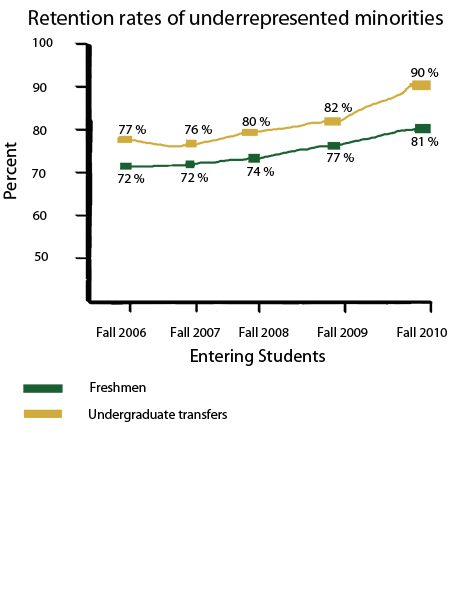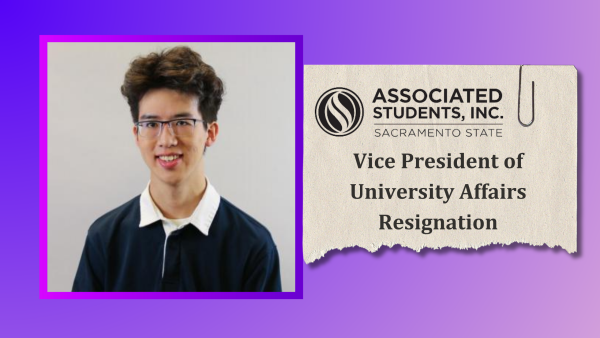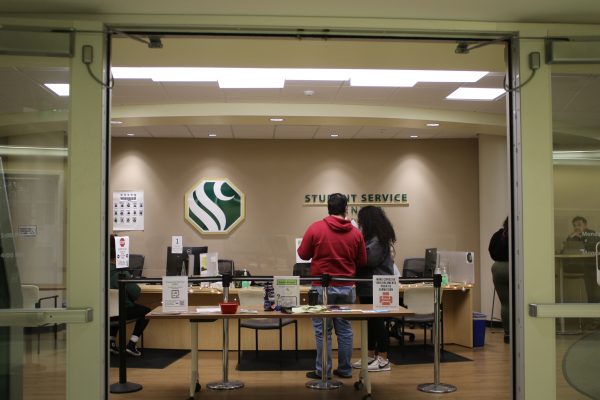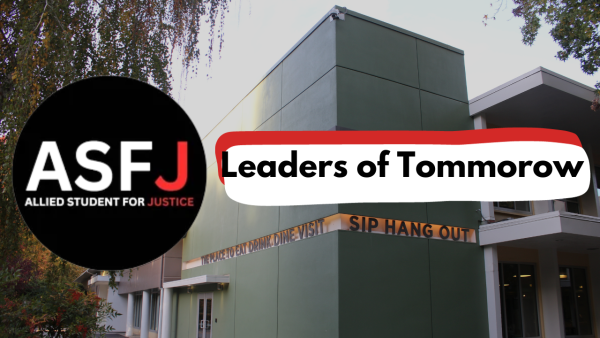Underrepresented minority retention rates increasing at Sac State

February 22, 2012
Retention rates for underrepresented minorities at Sacramento State are rising, which is a goal all California State University campuses are attempting to reach as part of the CSU Graduation Initiative.
Underrepresented minorities consist of African-Americans, Latinos, Pacific Islanders and Native Americans.
Freshmen staying enrolled after one year have increased from 72 percent in 2006 to 81 percent in 2010, according to the Office of Institutional Research.
“We’ve instituted mandatory advising and mandatory orientation. And we’ve increased retention services, including the publicity of retention services,” said Marcellene Watson-Derbigny, associate vice president of student retention and academic success.
More transfer students are also staying enrolled than before, going from 77 percent to 90 percent in the same time frame.
According to data from OIR, students who first go to community college are much more likely to stay in school and graduate.
Watson-Derbigny said there are multiple reasons why transfer students succeed more, from being more mature to financial concerns.
“The recession can lend to increased student persistence among students on a college campus given the scarcity of jobs in the community,” Watson-Derbigny said.
Although the retention rate is increased, there is still an achievement gap between underrepresented minorities and non-underrepresented minorities.
There is a 5.2 percent rate gap between underrepresented minorities and non-minorities who have transferred to Sac State. Among freshmen, the gap is greater at 10.3 percent.
For transfer students who came to Sac State in 2007 and stayed through 2011, the graduation rate was 58 percent overall. For underrepresented minorities, it was 47 percent.
System-wide, CSU students overall graduate rate is slightly more than 50 percent. The CSU graduation initiative’s goal is to reduce the gap in half and increase the graduation rate by 8 percent.
According to the Increasing Graduation Rates and Closing Achievement Gap report, “Constructing measures and curricula that reflect student diversity is imperative to move toward creating equitable, accessible and high quality post-secondary education.”
The Graduation Initiative Steering Committee compiled the report to state the future goals of the university.
Educational Opportunity Program retention coordinator Jerry Blake said historically there has been a gap in the representation in the education of groups of students.
The report states some of the reasons students do not graduate are cultural isolation and entering the university underprepared.
To close the achievement gap, the committee has created measures to help students. Some of the measures include supporting groups for underrepresented students addressing academic success. Having students enroll in Early Start to help reduce the amount of students taking remedial classes is also planned.
“I think that it is important that retention rates go up to ensure that the gap in achievements is decreased and that all of our students are afforded the same opportunity for success,” Blake said.
Mitchell Wilson can be reached at [email protected].









































































































































